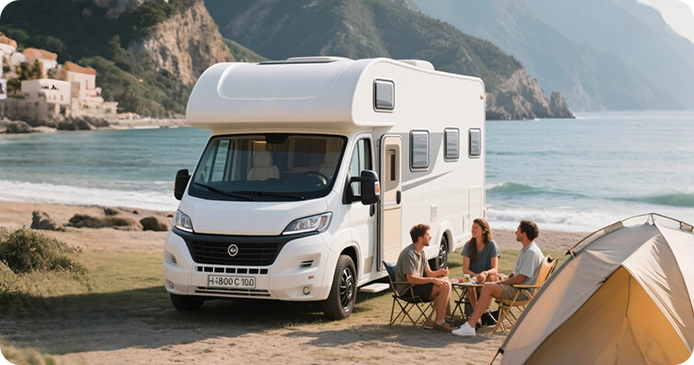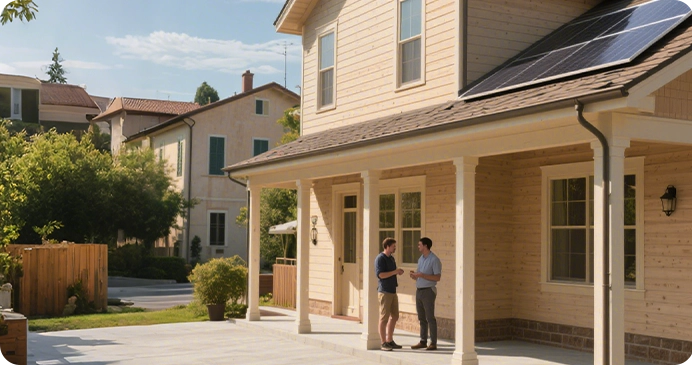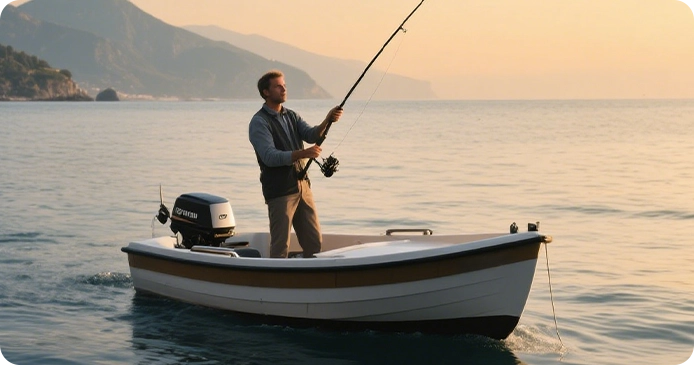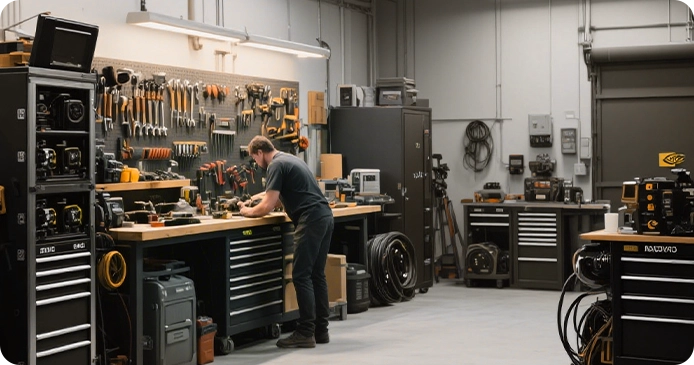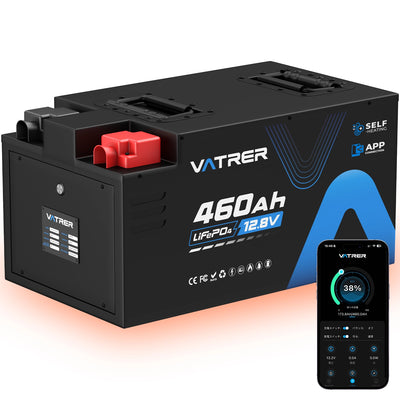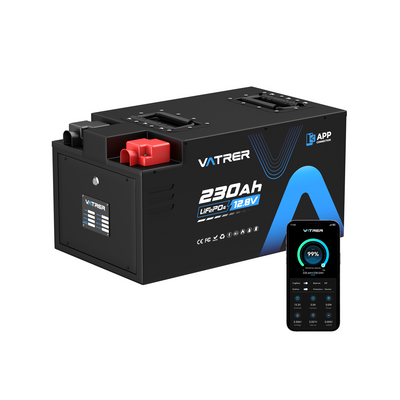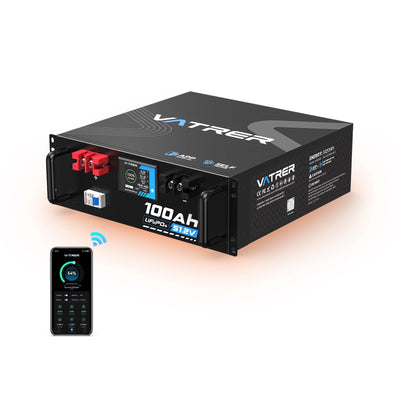2025年にRVに必要なインバーターのサイズは?
Reading time Less than 1 minute
オフグリッドでRV機器の電源確保に苦労していませんか?2025年の冒険に最適なインバーターのサイズ選び方法を学びましょう。電気の学位は必要ありません。実例と太陽光発電システム導入のヒントも掲載しています。
動かない家を四輪駆動車と景色のいい家に買い替えたなんて、いい決断ですね!でも今は、RVの電気系統をまるで象形文字のように見詰めているところです。でもご安心ください。インバーターの必要性を理解するのは、思ったほど難しくありません。キャンプファイヤーを囲んでおしゃべりするように、インバーターについてお話ししましょう。
✅目次:
パワーインバーターとは何ですか?
RV インバーターを電力変換器として考えてください。
RV のバッテリーやソーラーパネルは「DC」(直流)に対応していますが、電子レンジ、ノートパソコン、あの便利な電気毛布などの機器は「AC」(交流)しか理解できません。
インバーターの役割は、その言語の壁を埋めることです。インバーターがなければ、オフグリッドのコンセントはただの飾り穴になってしまいます。
でもちょっと待ってください。インバーターとコンバーター(整流器)の違いは何でしょうか?よくぞ聞いてくれました!コンバーターは逆の役割をします。キャンプ場のコンセントから供給される交流電源を直流電源に変換してバッテリーを充電します。インバーターとコンバーターは、まるで「フレネミー(親友)」のようです。どちらも欠かせないものですが、仕組みが異なります。
詳しくはこちら: 電力コンバータとは何か?(そしてなぜ気にする必要があるのか)
関連製品: Vatrer 36V / 48V&72V から 12V ゴルフカート用パワーバックコンバータ
電力変換器の種類
チートシートはこちらです:
| コンバータタイプ | 技術名称 | 主な機能 | 一般的な用途 |
| AC-DC | 整流器 | AC → DC 変換 | 携帯電話の充電器、電源アダプター |
| DC-AC | インバーター | DC → AC 変換 | 太陽光発電インバータ、UPSバックアップ |
| DC-DC | DC-DCコンバータ(降圧/昇圧) | ステップ電圧の増減(DCのみ) | バッテリーシステム、LEDドライバー |
| AC-AC | AC-ACコンバータ(サイクロ/マトリックス) | AC電圧と周波数を直接変更する | 大型モータ制御、グリッド周波数変換 |
インバーターのサイズを決める方法:計算機は不要
さて、実践に移りましょう。適切なインバーターを選ぶには、次の2つの点に絞られます。
- 何に電力を供給したいですか(「必須」のガジェット)?
- あなたのバッテリーはどれくらい耐えられますか?(真夜中にバッテリーが切れるのは誰も望んでいませんから)
ステップバイステップのチートシートは次のとおりです。
ステップ1:「パワーハングリー」リストを作成する
ノートを用意して、家電製品に目を通しましょう。ワット数(通常はステッカーか取扱説明書に記載されています)を確認してください。ワット数がわからない場合は、次の計算式を使って計算してみましょう。
Watts = Volts × Amps
例:あなたのクロックポットは120V、5Aと書いてありますか?つまり600ワットですね。はい、これであなたは電気技師です。
ステップ2:合計する(ただし数字はごまかす)
同時に使うものすべてにワット数を加算しましょう。Netflixをストリーミングしながらコーヒーを淹れ、DJIドローンを充電する?まさにパワーパーティーです。さらに30%のワット数を追加しましょう。家電製品は起動時に電力を多く消費することが多く、消費電力が大きくなることがあるからです。
ステップ3:バッテリーを合わせる
インバーターの性能はバッテリーバンクの性能に左右されます。2,000Wのインバーターに小さなバッテリーを組み合わせれば、まるで三輪車にジェットエンジンを取り付けたようなもので、あっという間に故障してしまいます。
- リチウムバッテリー(Vatrer RVシリーズなど)は、まさに最高の選択肢です。軽量で長持ちし、ロードトリップの途中でバッテリーが切れてしまうこともありません。
-
鉛蓄電池?安いけど、50%以下に放電するとダメになるよ。
純正正弦波と修正正弦波
すべてのインバーターが同じ性能というわけではありません。要点は以下の通りです。
純正正弦波インバーター
- メリット:ノートパソコンやCPAP機器を傷めない、スムーズでクリーンな電力供給。繊細な電子機器に最適です。
- 短所:家族全員分の Netflix サブスクリプションよりも費用がかかります。
修正正弦波インバーター
- メリット:予算に優しい。照明、工具、トランシーバーの充電など、基本的な用途に使えます。
- デメリット:ファンがカズーバンドのようなハミング音を発する可能性があります。医療機器や高価なガジェットとの併用は避けてください。
つまり、ホームオフィスや医療機器を運用しているなら、純正正弦波電源にお金をかけましょう。ただ電気を点けるだけなら、改造してコストを節約しましょう。
インストールのヒント
機器を燃やさないために。インバーターの設置は難しいことではありませんが、教訓的な話にならないようにするための方法をご紹介します。
- 設置場所は重要です。乾燥していて風通しの良い場所に設置してください。ベッドの下なら問題ありませんが、プロパンタンクの横なら絶対にダメです。
- プロのように配線する:太い電線を使いましょう。細い電線は、キャンプ場を誰かに盗まれた時に、あなたの怒りよりも早く過熱してしまいます。「電線ゲージ表」でGoogle検索して、正しい配線方法を見つけましょう。
- 休む前にテスト:まずは安価なランプを差し込んでみましょう。点灯すれば成功です。点灯しない場合は、接続を確認してください(あるいは水星逆行のせいにしましょう)。
ヒント:リモート スイッチを追加すると、RV の下部に潜り込まなくてもインバーターのオン/オフを切り替えることができます。
ソーラーパネル + インバータ = 理想の組み合わせ
太陽光発電とインバーターを組み合わせるのは賢い選択です。その理由は次のとおりです。
- フリーエネルギー:太陽は巨大なバッテリー充電器です。
- 静かな電力:グランピングをしている隣人を困らせるような騒音を出す発電機はありません。
しかし…必要なものは以下のとおりです。
- 電力需要を満たすのに十分なソーラーパネル(200~400ワットから開始)。
- バッテリーの過充電を防ぐ充電コントローラー (電源システムの用心棒と考えてください)。
よくある質問
Q: インバーターを使用して AC を稼働できますか?
A: はい、でもティラノサウルスに餌をやるようなものです。13,500BTUのエアコンには約3,500ワット(起動時のサージを含む)の電力が必要です。4,000Wのインバーターと、元カレのプライドを超えるほどの大容量のバッテリーバンクを組み合わせましょう。
Q: 初心者が犯す一番のミスは何ですか?
A: 30%のバッファを忘れていました。 「でも私のブレンダーは700Wしか使わないのに!」 → 驚いた!起動時に1,000Wも必要になるんです。
Q: インバーターが煙探知機のようなビープ音を鳴らすのはなぜですか?
A: 過負荷、過熱、あるいはあなたの人生における選択を誤判断している可能性があります。マニュアルを確認してください(そして、ささやきながら謝罪しましょう)。
実例:「ビジュアルが欲しい」という人向け
週末の戦士
- デバイス:ノートパソコン (60W) + ストリングライト (20W) + ブレンダー (800W)
- 合計: 880W + 30% = 1,144Wインバーターなので、1200Wインバーターを選択します。
- バッテリー: 100Ah リチウム (Netflix を観ながらくつろぐときに約 10 時間持続します)。
フルタイムローディー
- デバイス:電子レンジ (1,200W) + インスタントポット (1,500W) + プロジェクター (300W)
- 合計: 3,000W + 30% = 3,900Wインバーターなので、4000インバーターを選択します。
-
バッテリー: 400Ah リチウム + ソーラーパネル。
最終考察: シンプルに
インバーター選びは完璧を求めるものではありません。冷めたコーヒーと暗い夜を避けることが重要です。以下の手順に従って設定をテストし、覚えておいてください。ベア・グリルスでさえ、最初のインバーター設置で失敗する可能性が高いのです。
大丈夫、大丈夫。さあ、広い道を駆け抜けよう(ついでにスマホの充電も忘れずに)。
シェア


























